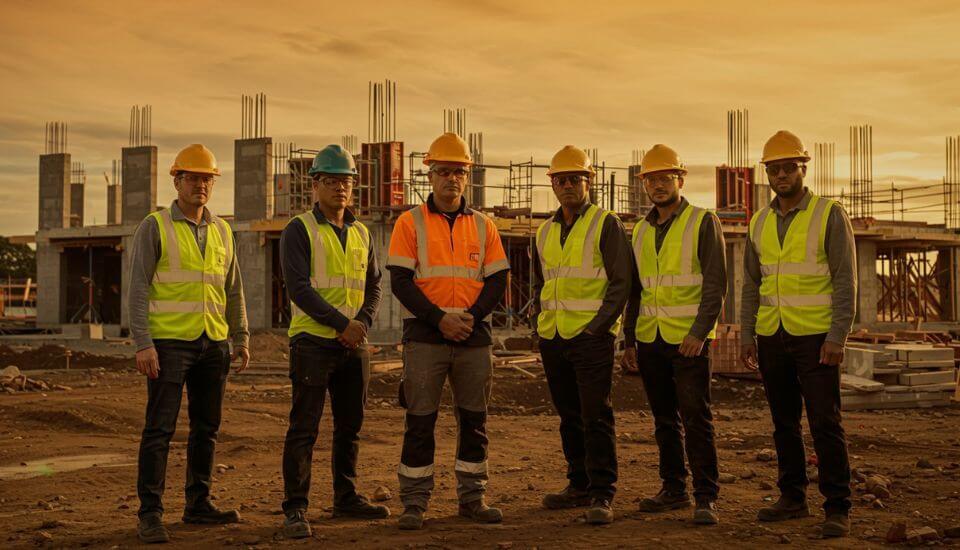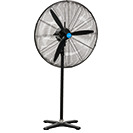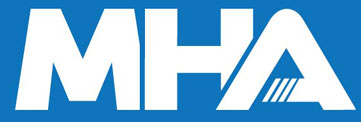Is All PPE the Same in Australia?
Date Posted:18 August 2025
The wrong PPE can cause injuries or WHS breaches. Find out how to select task-specific protection that ensures safety and compliance across industries.
Verdex Insights: At a Glance
-
The Challenge: Many workplaces treat PPE as universal protection, assuming one type fits all tasks. This misconception leads to inadequate protection, safety breaches, and WHS non-compliance that can put workers and operations at risk.
-
The Insight: PPE must be selected according to task, environment, and risk level. Different materials, impact ratings, and visibility classes exist for a reason—choosing the right combination ensures comfort, safety, and compliance without compromising productivity.
-
The Verdex Solution: Verdex provides certified PPE clothing and safety gear for industries including construction, warehousing, food processing, logistics, and manufacturing. Our WHS-compliant, task-specific equipment helps businesses eliminate guesswork, protect employees, and maintain a consistent safety standard across every site.
Is All PPE the Same? Here’s Why the Answer Is No
Personal Protective Equipment (PPE) is not a “one size fits all” solution. While it may be tempting to assume that any PPE will do the job, using the wrong type of gear can put workers at risk and give a false sense of security.
Each piece of PPE is designed to mitigate specific hazards—such as chemical exposure, impact injuries, noise pollution, poor visibility, or biohazards. For example, the gloves that protect against sharp tools won’t help with hazardous liquids, and basic safety glasses won’t shield a welder from blinding UV radiation.
To stay compliant with WHS regulations and genuinely protect your team, employers must ensure PPE matches the hazards of the task and the workplace environment.
What Affects the Type of PPE You Need?
Type of Industry
Different industries face distinct hazards, which demand tailored PPE solutions.
For instance, construction workers commonly require hard hats, steel-capped boots, and hi-vis clothing. In contrast, food processing staff may need hair nets, slip-resistant shoes, and disposable gloves. Meanwhile, warehouse teams working in dusty environments might wear dust masks, but those handling chemicals would require a certified respirator.
At Verdex, we understand using PPE not suited to your industry risks both non-compliance and employee harm.
Type of Task Performed
Even within the same industry, PPE varies by job function. A welder needs eye and face shields, flame-resistant clothing, and gauntlet gloves. A forklift operator may only need safety boots and a hi-vis vest. A worker cleaning up a chemical spill needs full-body protection, splash-proof goggles, and chemical-resistant gloves.
Choosing task-appropriate PPE ensures workers are adequately protected without unnecessary discomfort or reduced mobility.
Level of Risk or Exposure
Risk level plays a crucial role in PPE selection. A receptionist in a logistics office faces far fewer hazards than a picker on a warehouse floor.
Jobs involving high-frequency or high-severity exposure—such as operating heavy machinery or handling corrosive substances—demand PPE that provides greater coverage and durability. Matching PPE to risk levels keeps workers safe and helps avoid over- or under-protection.

PPE Differences by Category
Each PPE category includes multiple variations, and selecting the wrong type can compromise safety.
Eye Protection
-
Safety glasses shield from flying particles.
-
Chemical splash goggles protect from liquids.
-
Welding shields defend against sparks and intense light.
Each is designed for a specific hazard—using the wrong one could result in permanent eye damage.
Gloves
Not all gloves are equal. Options include:
-
Cut-resistant gloves for handling sharp materials
-
Chemical-resistant gloves (e.g., nitrile) for hazardous liquids
-
Heat-resistant gloves for hot surfaces
Selecting the incorrect glove can leave hands vulnerable to burns, lacerations, or chemical exposure.
Footwear
-
Steel-toe boots prevent crush injuries
-
Anti-static shoes are crucial in electronics manufacturing
-
Waterproof gumboots are ideal for wet or chemical-prone environments
The wrong footwear can lead to slips, falls, or even electrical accidents.
Respiratory Protection
-
Dust masks filter non-toxic particles
-
Full-face respirators protect against vapours and hazardous chemicals
Matching respiratory PPE to the air quality risk is essential for avoiding lung irritation or long-term illness.
Hi-Vis Clothing
Hi-vis garments are available in different classes:
-
Day-use vests
-
Night-use reflective jackets
-
Dual-purpose designs
Using the wrong class in poor lighting or traffic areas can put workers at risk of not being seen. See our full selection of PPE Clothing and Safety Gear available in Australia.
Why Using the Wrong PPE Is a Safety Risk
Incorrect PPE use can be just as dangerous as using no protection at all. Ill-matched gear can lead to:
-
Injury or illness due to incomplete protection
-
WHS breaches, inspections, or penalties from regulators
-
Reduced worker confidence in safety procedures
In workplaces where PPE compliance is taken seriously, staff are more likely to follow protocols and avoid injury. Misuse or neglect of proper PPE undermines safety culture and can harm morale.
To improve the quality of your workplace PPE, consider equipping your environments with safety barriers and security bollards, workplace first aid equipment kits and workplace safety signage and information.

Tips for Choosing the Right PPE for Your Workplace
The best way to ensure you have the right PPE is through a systematic and tailored approach. Here’s what to do:
-
Conduct a hazard assessment: Identify potential risks across all job roles.
-
Match PPE to the task and risk: Choose gear that addresses the specific hazards present.
-
Ensure compliance: PPE must meet relevant Australian Standards such as AS/NZS 4501, 2210, or 1716.
-
Provide training: Show workers how to wear, adjust, and maintain PPE correctly.
-
Review and replace: Inspect PPE regularly for damage or wear and replace it when needed.
-
Use a trusted supplier: Sourcing PPE from reputable providers like Verdex ensures quality, compliance, and support.
Choosing the right PPE is an investment in both safety and productivity.
Need Help Selecting the Right PPE?
At Verdex, we understand that selecting PPE can be complex—but getting it right is non-negotiable. Our team offers expert advice and a full range of certified, task-specific PPE solutions tailored to Australian workplaces.
Whether you’re managing a construction crew, warehouse floor, or food processing plant, we can help you keep your team protected and compliant with the best workplace safety equipment and supplies.
Get in touch with the team to learn more about our range of safety equipment by emailing our helpful team at sales@verdex.com.au or filling out our online contact form.
Frequently Asked Questions
Is PPE the same across all job roles?
No. PPE varies based on the tasks performed and hazards encountered. For example, a welder’s PPE differs greatly from that of a cleaner or forklift driver.
Can I buy general PPE and use it for everything?
No. Generic PPE often lacks the specific features required for certain tasks. Using non-specialised gear may not protect against particular hazards and could breach WHS obligations.
Who decides what PPE is required?
The employer is responsible for identifying necessary PPE through a risk assessment and must consult workers and safety representatives during the selection process.
Do all PPE items have to meet Australian Standards?
Yes. PPE used in Australian workplaces must meet relevant AS/NZS standards to ensure it offers adequate protection and is legally compliant.
What happens if staff use incorrect PPE?
Using incorrect PPE can result in injuries, fines, or legal action. It may also lead to insurance complications and a poor safety reputation.
































































































































 Trolleys & Hand Trucks
Trolleys & Hand Trucks Cage Trolleys
Cage Trolleys Cleaning Carts & Trolleys
Cleaning Carts & Trolleys Construction Trolleys
Construction Trolleys Custom Trolleys
Custom Trolleys Hand Trucks & Dollies
Hand Trucks & Dollies Laundry/Linen Trolleys
Laundry/Linen Trolleys Lifting Trolleys
Lifting Trolleys Order Picking Trolleys
Order Picking Trolleys Panel Cart Trolleys
Panel Cart Trolleys Platform Trolleys
Platform Trolleys Powered Trolleys
Powered Trolleys Shelf & Tiered Trolleys
Shelf & Tiered Trolleys Shopping Trolleys
Shopping Trolleys Stainless Steel Trolleys
Stainless Steel Trolleys Tool Trolleys
Tool Trolleys Utility & Service Carts
Utility & Service Carts Lifting & Handling Equipment
Lifting & Handling Equipment Forklift Attachments
Forklift Attachments Jib Attachments
Jib Attachments Lifting Hoists & Pallet Hooks
Lifting Hoists & Pallet Hooks Load Skates & Tow Tugs
Load Skates & Tow Tugs Manual Stackers & Lifters
Manual Stackers & Lifters Pallet Jacks
Pallet Jacks Pallet Lifters
Pallet Lifters Pallet Rotators & Dispenser
Pallet Rotators & Dispenser Powered Pallet Trucks & Electric Lifters
Powered Pallet Trucks & Electric Lifters Scissor Lift Trolleys and Tables
Scissor Lift Trolleys and Tables Conveyor Equipment
Conveyor Equipment Conveyor Frames & Stands
Conveyor Frames & Stands Roller & Skate Conveyors
Roller & Skate Conveyors Ladders & Access Equipment
Ladders & Access Equipment Container & Yard Ramps
Container & Yard Ramps Ladders & Step Stools
Ladders & Step Stools Work Platforms & Crane Cages
Work Platforms & Crane Cages Drum Handling Equipment
Drum Handling Equipment Drum Storage & Bunding
Drum Storage & Bunding Drum Trolleys & Lifters
Drum Trolleys & Lifters Forklift Drum Handling
Forklift Drum Handling Waste Handling & Bins
Waste Handling & Bins Bin Lifters & Tippers
Bin Lifters & Tippers Plastic Waste & Wheelie Bins
Plastic Waste & Wheelie Bins Steel Waste & Tipping Bins
Steel Waste & Tipping Bins Waste Carts
Waste Carts Dangerous Goods Storage & Spillage
Dangerous Goods Storage & Spillage Aerosol Cans Storage Cages
Aerosol Cans Storage Cages Bunded Pallets & Storage
Bunded Pallets & Storage Corrosive Goods Storage Cabinets
Corrosive Goods Storage Cabinets DG Storage & Trolleys
DG Storage & Trolleys Flammable Liquid Cabinets
Flammable Liquid Cabinets Forklift Gas Storage Cages
Forklift Gas Storage Cages Site Storage
Site Storage Spill Kits
Spill Kits Shelving & Storage Equipment
Shelving & Storage Equipment Stillage & Transport Cages
Stillage & Transport Cages 750 Series Cage Configurations
750 Series Cage Configurations Heavy Duty Cabinets
Heavy Duty Cabinets Heavy Duty Shelving
Heavy Duty Shelving Mega Bins & Pallets
Mega Bins & Pallets Packing & Workbenches
Packing & Workbenches Parts Trays & Stor-Pak Bins
Parts Trays & Stor-Pak Bins Pegboard & Louvre Panels
Pegboard & Louvre Panels Plastic Bins & Crates
Plastic Bins & Crates Plastic Handling Solutions Bins
Plastic Handling Solutions Bins Plastic Pallets
Plastic Pallets Stack & Nest Bins
Stack & Nest Bins Pallet Racking Accessories
Pallet Racking Accessories Workplace Equipment
Workplace Equipment Modular Workbenches
Modular Workbenches Electric Height-Adjustable Workbenches
Electric Height-Adjustable Workbenches Floor Matting
Floor Matting General Workplace Equipment
General Workplace Equipment Industrial Weighing Scales
Industrial Weighing Scales Packaging Machinery
Packaging Machinery Stationery Cupboards
Stationery Cupboards Storage and Stillage Cages
Storage and Stillage Cages Tool Trolleys
Tool Trolleys Tooling Cabinets
Tooling Cabinets Workshop Fans and Coolers
Workshop Fans and Coolers Safety Barriers, PPE & Signage
Safety Barriers, PPE & Signage Barriers & Bollards
Barriers & Bollards First Aid Equipment
First Aid Equipment Gloves, Knives and PPE
Gloves, Knives and PPE Signage
Signage Cleaning & Site Supplies
Cleaning & Site Supplies Cleaning Equipment
Cleaning Equipment Cleaning Trolleys
Cleaning Trolleys Rubbish Bins
Rubbish Bins Signs & Traffic Supplies
Signs & Traffic Supplies Construction Equipment
Construction Equipment Construction Trolleys
Construction Trolleys Waste Handling
Waste Handling General Site Equipment
General Site Equipment Concrete Equipment
Concrete Equipment Site Storage
Site Storage Lifting Equipment
Lifting Equipment Verdex Specials
Verdex Specials









